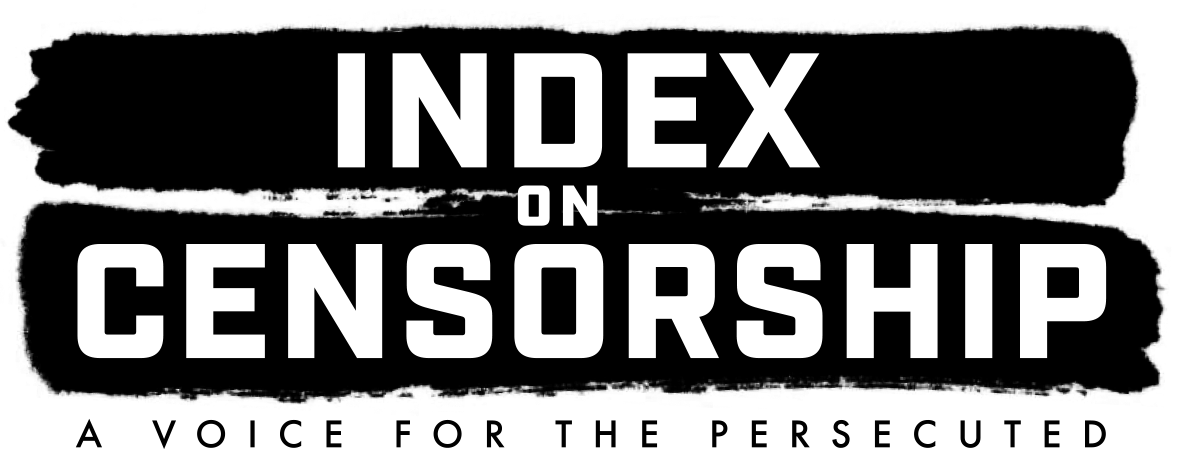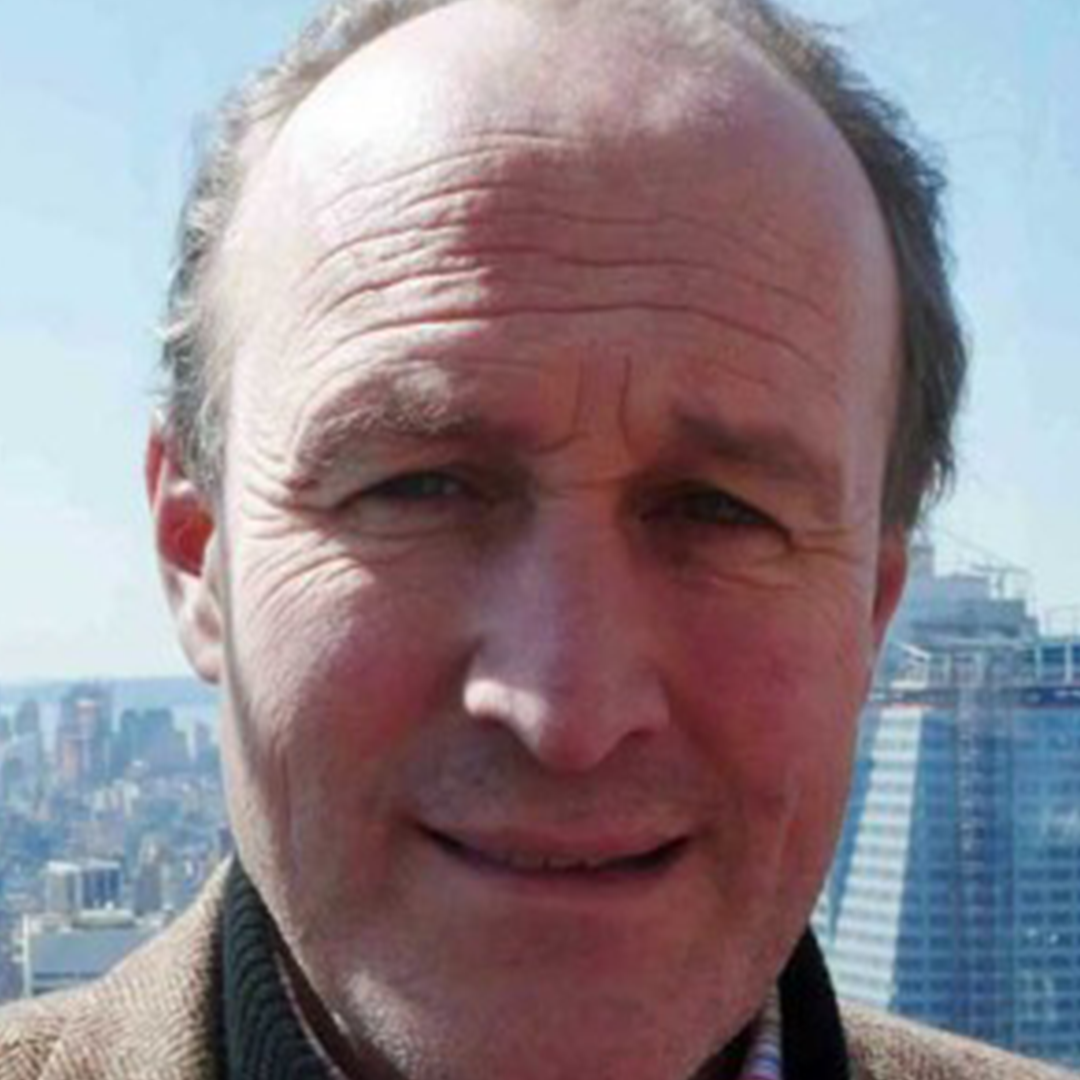20 Sep 17 | Campaigns -- Featured, Press Releases
 Index on Censorship’s database tracking violations of press freedom recorded 571 verified threats and limitations to media freedom during the first two quarters of 2017.
Index on Censorship’s database tracking violations of press freedom recorded 571 verified threats and limitations to media freedom during the first two quarters of 2017.
During the first six months of the year: three journalists were murdered in Russia; 155 media workers were detained or arrested; 78 journalists were assaulted; 188 incidents of intimidation, which includes psychological abuse, sexual harassment, trolling/cyberbullying and defamation, were documented; 91 criminal charges and civil lawsuits were filed; journalists and media outlets were blocked from reporting 91 times; 55 legal measures were passed that could curtail press freedom; and 43 pieces of content were censored or altered.
“The incidents reported to the Mapping Media Freedom in the first half of 2017 tell us that the task of keeping the public informed is becoming much harder and more dangerous for journalists. Even in countries with a tradition of press freedom journalists have been harassed and targeted by actors from across the political spectrum. Governments and law enforcement must redouble efforts to battle impunity and ensure fair treatment of journalists,” Hannah Machlin, Mapping Media Freedom project manager, said.
Q1 2017
During the first quarter the MMF database registered several trends that can be recognised as acute challenges to media freedom. A total of 299 incidents were reported to the project by MMF correspondents and other journalists between 1 January and 31 March 2017.
Some European governments clearly interfered with media pluralism. Other governments harassed, intimidated and detained journalists. The net effect of these interventions have been to debase and devalue the work of the press and undermine a basic foundation of democracy.
Throughout Q1: one journalist was murdered; 42 incidents of assault were confirmed; there were 89 verified reports of intimidation; media professionals were detained in 69 incidents; 38 criminal charges and civil lawsuits were filed; and journalists were barred from reporting in 54 verified incidents.
The full Q2 report is available on the web or in a combined Q1/Q2 PDF.
Q2 2017
The crackdown on media freedom throughout Europe — even within those countries perceived to be more democratic — continued in Q2 2017. A total of 272 incidents were reported to the project by MMF correspondents and other journalists between 1 April and 30 June 2017.
While the number of reports recorded during the second quarter declined nearly 10 per cent from the first quarter, this does not indicate an improvement in the overall state of media freedom. The situation for journalists across Europe remained extremely concerning. For example, the number of arrests decreased during the quarter, but hundreds of journalists were in detention or were forced into exile. In addition, based on the severity of the second quarter reports, inhumane treatment of media workers actually increased.
Throughout Q2: two journalists were killed; 36 incidents of physical assault and injury were reported; 53 criminal charges and civil lawsuits were filed; 99 instances of intimidation, which includes psychological abuse, sexual harassment, trolling/cyberbullying and defamation, took place; journalists were blocked from covering stories 54 times; 20 legal measures were passed that curtail press freedom; and 19 works were censored/altered by the state or editorial teams.
The full Q2 report is available on the web or in a combined Q1/Q2 PDF.
For more information, please contact:
For further information, please contact Hannah Machlin, project manager, Mapping Media Freedom on hannah@indexoncensorship.org
About Mapping Media Freedom
Mapping Media Freedom – an Index on Censorship-lead project with partner European Federation of Journalists and Turkey-based P24, Platform for Independent Journalism, partially funded by the European Commission – covers 42 countries, including all EU member states, plus Bosnia, Iceland, Kosovo, Macedonia, Montenegro, Norway, Serbia, Turkey, Albania along with Ukraine, Belarus and Russia and Azerbaijan. The platform was launched in May 2014 and has recorded over 3,300 incidents threatening media freedom by the end of Q2 2017.
Search reported incidents throughout Europe at https://mappingmediafreedom.org.
19 Sep 17 | Events, Volume 46.03 Autumn 2017 Extras
[vc_row][vc_column][vc_column_text]
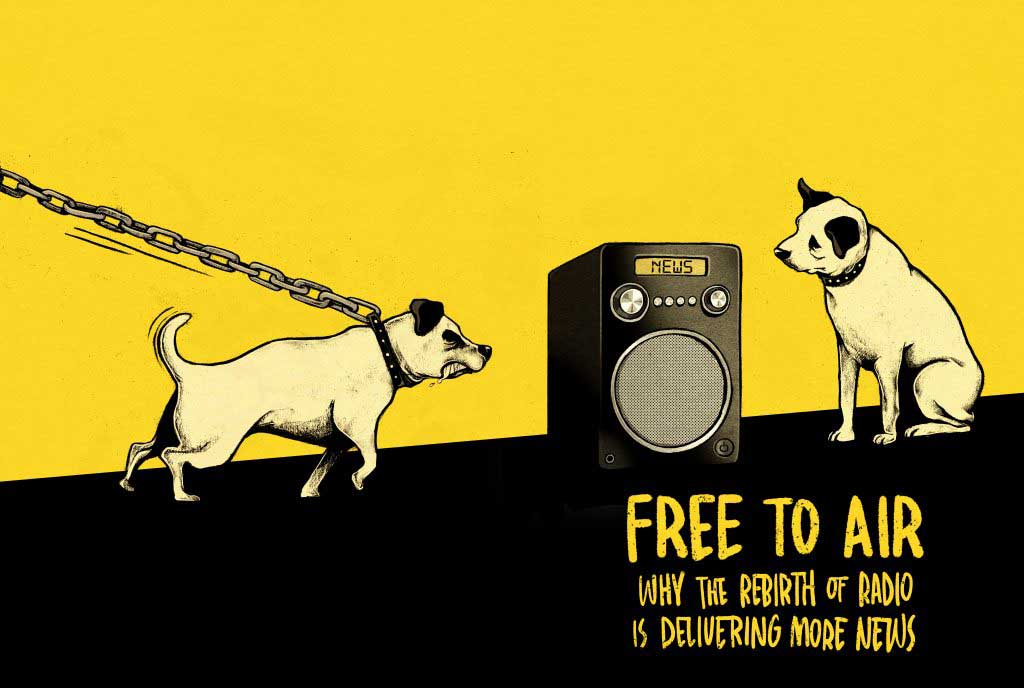
Free to air is the autumn 2017 edition of Index on Censorship magazine
Join Index on Censorship magazine for the launch of the autumn 2017 celebrating all things radio.
In conjunction with our friends at Resonance FM, Index will be broadcasting all evening on Tuesday 10 October, as we discuss the rebirth of radio and why it is so important to freedom of expression.
Special guests include Jamie Angus, deputy director of the BBC World Service Group, broadcaster and DJ Tabitha Thorlu-Bangura from NTS Live, broadcaster and sound artist Fari Bradley from Resonance FM and writer and broadcaster Mark Frary, who will also be running a short DIY podcasting workshop before the panel discussion.
We’re launching the magazine with its special report Free to Air: Why the Rebirth of Radio is Delivering More News at the iconic Tea Building in Shoreditch, home to digital product studio ustwo, our venue partners for the launch. Features in the latest magazine include a 98-year-old granny making grassroots radio in the USA, radio journalists in Somalia who brave danger to do their jobs and the Spanish comedians who make a television show about a radio station.
There will be drinks from Flying Dog Brewery, our freedom of expression chums and sponsors and we’ll be closing the evening with a DJ set from Resonance FM’s very own Nana Nicol.
6:00 – 6:30 DIY podcasting workshop, register for your free space via events@indexoncensorship.org
6:30 – 7:15 drinks
7:15 – 8:30 Panel discussion
8:30 – 9:00 DJ set from Nana Nicol
Many thanks to:[/vc_column_text][vc_row_inner][vc_column_inner width=”1/3″][vc_single_image image=”95760″ img_size=”full” onclick=”custom_link” link=”https://resonancefm.com/”][/vc_column_inner][vc_column_inner width=”1/3″][vc_single_image image=”80918″ img_size=”full” onclick=”custom_link” link=”https://uk.sagepub.com/”][/vc_column_inner][vc_column_inner width=”1/3″][vc_single_image image=”95897″ img_size=”full” onclick=”custom_link” link=”https://ustwo.com/”][/vc_column_inner][/vc_row_inner][/vc_column][/vc_row][vc_row][vc_column][vc_column_text]
When: Tuesday 10 October 18:30 to 21:00
Where: ustwo London, 62 Shoreditch High Street, London E1 6JJ
Tickets: Free. Registration required via Eventbrite
[/vc_column_text][/vc_column][/vc_row]
19 Sep 17 | Europe and Central Asia, Italy, Mapping Media Freedom, News and features
[vc_row][vc_column][vc_column_text]
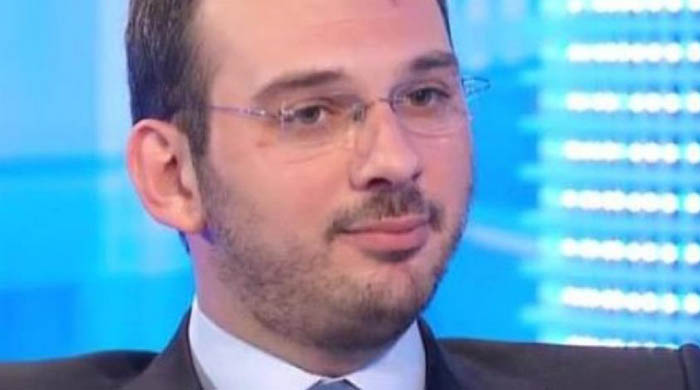
Italian journalist Paolo Borrometi.
Italian journalist Paolo Borrometi was forced to move to Rome from Sicily because of threats he was receiving connected with his reporting on organised crime. Borrometi’s story is far from unique. He is one of the 20 journalists currently under police escort in Italy.
In May 2014, Borrometi was beaten by two hooded men near his home after he asked citizens to report any relevant information to investigators about a two-year-old murder. The assault did not deter his reporting on organised crime, nor did a vandalism incident in which the front door of his parent’s home was destroyed in an arson attack.
Despite being forced to relocate to Rome for security reasons, Borrometi’s work uncovering mafia activities continued, as did the almost constant intimidation he faced. This summer a group of unidentified people raided his home, stealing computer hard disks and a series of documents related to his investigations.
The Italian Interior Ministry released official figures of the number of journalists under police protection for the first time in June 2017 to highlight the growing phenomenon.
Borrometi works as editor-in-chief of a local webzine, LaSpia.it, and is a contributor to several other media outlets as a freelancer. Without a regular salary, he needs to keep publishing to earn a living. Many Italian journalists are in the same position financially. According to Nicola Marini, a board member of the Association of Journalists (Ordine dei Giornalisti), which monitors the ethical conduct of journalists, eight out of ten Italian journalists earn less than €10,000 per year.
Beppe Giulietti, the president of the Italian journalists’ trade union FNSI, recounted a conversation he had with Borrometi after the interior ministry decided to put him under escort: “He was worried this situation could interfere with his job.” For freelance reporters a mafia threat does not just affect personal safety, it creates a serious obstacle to performing their jobs. Conducting a simple interview becomes a lot harder when the reporter is followed by a group of policemen. But without them, Borrometi’s life would be in serious danger.
“Compared to the past, the current situation for journalists shows fewer mafia killings,” Giulietti told Index on Censorship. “But sometimes physical threats are not necessary.”
Indeed the economic situation for Italian journalists is harsh and, as Giulietti said, “a defamation lawsuit could be as lethal as a bullet”. Many journalists stop working on investigations because of the risk of lawsuits. If they were sued they wouldn’t be able to afford the economic risks. The result is self-censorship.
Many lawsuits have no legal basis. The Italian permanent observatory on threats to journalists, Ossigeno, estimates that one-third of defamation claims in Italy originate from allegedly mafia-connected people or lobbies.
These cases are often civil and the plaintiff demands enormous amounts of money even though the claim is created as a pretext and the alleged damage is minimal. Quite often the aim is only to intimidate.
The financial fragility of journalists has led to a phenomenon that Alberto Spampinato, president of Ossigeno, calls “the Italian paradox”. Italy has a long history of journalists killed by mafia-affiliated killers, especially during the late 1980s and 1990s. This situation brings growing attention to the link between freedom of information and organised crime.
After an initially strong reaction from the public, things usually turn silent. Ossigeno, which was founded in 2007 after three journalists and writers – Roberto Saviano, Lirio Abbate and Rosaria Capacchione – were put under police escort, aims to put a continuous spotlight on threats to journalists. The Italian public is aware of the problem but politicians are not reactive, according to both Spampinato and Giulietti. Freedom of information, especially related to the nexus between organised crime, politics and corruption is constantly under siege.
The Italian parliament is currently discussing a new law to avoid the complete transcriptions of the intercepted conversations, “but no one is taking care of the lawsuits based on weak grounds which are only made to intimidate journalists (in Italian defined as “querela temeraria”), although the trade union has already highlighted this problem,” Giulietti said. The president of the journalists’ trade union wants to stress how politicians are focused only in amending the system not to publish news that could affect them, rather than amending a concrete vulnus in freedom of journalists.
According to the latest Ossigeno report, reporting on organised crime is harder for people who live in remote places. Local journalists often feel pressure from local officials and criminal syndicated, Spampinato explained.
For example, in Rho, a small town in the outskirts of Milan, the newsroom of the local newspaper, Settegiorni, was vandalised by a group of unknown people three times in three months, the latest incident occurring on 3 September. The newspaper has been working on an investigation about the presence of the criminal syndicate ‘Ndrangheta in Rho, according to editor-in-chief Angelo Baiguini.
Though politicians are slow to act, some parts of the Italian parliament are monitoring the situation. The Parliamentary Anti-Mafia Commission set up a Committee on Mafia, Journalism and Media. In August 2015 the Committee highlighted that there are southern Italian regions where media publishers have an “opaque management”, involved in judiciary case, even for alleged external support to mafia syndications. Obviously they are willing to stop muckrakers digging into their businesses.
Up until now, there have been no solutions to this problem from a legal perspective. This leaves many good reporters at risk and makes in-depth reporting about organised crime ever more difficult. [/vc_column_text][/vc_column][/vc_row][vc_row][vc_column][vc_basic_grid post_type=”post” max_items=”4″ element_width=”6″ grid_id=”vc_gid:1505821805138-929619f7-ec4b-9″ taxonomies=”193, 6564″][/vc_column][/vc_row]
18 Sep 17 | News and features, Volume 46.03 Autumn 2017 Extras
[vc_row][vc_column][vc_custom_heading text=”In the Autumn issue of Index on Censorship magazine, we explore the censorship of the female nipple, which occurs offline and on in many areas around the world. We speak to photographers and magazine editors who are covering up and the women who are fighting against it, one nipple at a time.”][vc_column_text]
Part of the controversy lies in the double standard. Male nipples are totally fine, despite little to no difference in their appearance. With that in mind, we present to you a male nipple. You can cut this out and put it over a female nipple. Your nipples will then be ready to go out in public.
You can read more about the latest issue of the magazine here.
[/vc_column_text][/vc_column][/vc_row]
14 Sep 17 | Mapping Media Freedom, News and features, Turkey
[vc_row][vc_column][vc_column_text]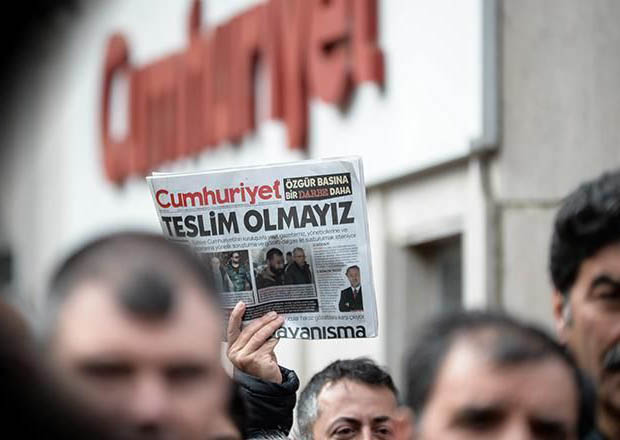
The trial of Cumhuriyet journalists and executives resumed on 11 September. The Istanbul 27th High Criminal Court issued an interim ruling to keep five defendants in prison.
These are: editor-in-chief Murat Sabuncu, president of the Cumhuriyet Executive Board and lawyer Akın Atalay, columnist and publications advisor Kadri Gürsel, reporter Ahmet Şık, accountant Emre İper and Ahmet Kemal Aydoğdu — a teacher unrelated to Cumhuriyet who is on trial on the basis of tweets he made — will remain under arrest.
The interim decision was in keeping with the prosecutor’s request for the continued imprisonment of the suspects on the grounds that the suspects might “obscure evidence” and are a “flight risk”.
“The charges holding Cumhuryiet journalists in prison a political attempt to silence one of Turkey’s oldest independent media outlets,” said Hannah Machlin, project manager for Index on Censorship’s Mapping Media Freedom project. “The decision to keep the five staff members behind bars is shameful yet indicative of Erdogan’s regime disregard for fundamental human rights.”
Emre İper, an accountant for Cumhuriyet who was arrested on 19 April on charges of using ByLock — an encrypted messages app allegedly used by the Fethullah Gülen network, the groups the Turkish authorities say was behind last year’s coup attempt — delivered his defence statement for the first time. Rejecting the allegation that he used ByLock, İper denies both that he used ByLock and that he is a member of a terrorist organisation.
“I would rather be held for an entire lifetime without any questioning than be held on FETÖ charges for just a single day,” he said. FETÖ — an acronym for Fetullahist Terrorist Organiation– is the name used for the Fethullah Gülen network by Turkish authorities. “I would like my acquittal from this shameful accusation,” he added.
Witnesses whose statements were included in the indictment delivered testimony in the trial. The session, which began at 10.30am, lasted until late in the evening.
Witnesses included İbrahim Yıldız, former editor-in-chief of the newspaper, its current news coordinator Aykut Küçükkaya, former Cumhuriyet Foundation board member Nevzat Tüfekçioğlu, Cumhuriyet reporter Miyase İlknur, Cumhuriyet columnist Şükran Soner, Cumhuriyet Foundation’s former accountant and executive Mustafa Pamukoğlu and former Cumhuriyet Foundation executive İnan Kıraç.
Most did not testify against the defendants, saying that they had voiced criticism of how the foundation was managed but did not agree with the terror charges levelled at the defendants.
Journalist Kadri Gürsel, who spoke at the hearing, said his defence statement was ignored by the authorities, asserting that his right to a fair trial had been violated.
He also denied claims that he had talked to people who used ByLock. He said most of these accusations stemmed from calls or SMS messages received from ByLock users, whose calls had gone unanswered.
Phone records also show, Gürsel said, that the last ByLock user who called him had phoned him six-and-a-half months prior to his employment at Cumhuriyet.
“I think I might be the only person under arrest in these media trials who was locked up for having been contacted by people who used ByLock,” he said. “The reason why I am being tried here is not because ByLock users contact me; it is because I am a critical journalist. I am being tried for my thoughts and journalistic activities. My only hope is for a fair trial.”
“I have a clean conscience regardless of what decision comes out of this trial,” Gürsel added.
Murat Sabuncu said he had spent ten-and-a-half of the 12 months he served as editor-in-chief in prison. He said the expert witness of the prosecution had never worked as a journalist and whose age was the same as the number of years he worked as a journalist.
“This trial will go down in the history of free speech as a dark stain,” he said. “We will continue to defend free speech for all journalists in Turkey, even if we spend more time in prison.”
Cumhuriyet reporter Ahmet Şık said: “I was arrested on charges of spreading propaganda for FETÖ, Revolutionary People’s Liberation Party Front (DHKP-C) and the Kurdistan Workers’ Party (PKK), and later my case was merged with this trial. The public likely thought it was being taken for a fool because of the FETÖ allegation and so this charge was dropped and I was officially charged with spreading propaganda for the PKK and the DHKP-C.”
Akın Atalay, who also spoke in the trial, said the case was a clear “picture of the democratic level Turkey was taken to.”
The trial was adjourned until 25 September. The next hearing will be heard at the Çağlayan Courtroom in central Istanbul. The presiding judge said remaining witnesses will be heard in the next trial, after which the court will be able to make a “sounder decision.”[/vc_column_text][/vc_column][/vc_row][vc_row][vc_column][vc_basic_grid post_type=”post” max_items=”4″ element_width=”6″ grid_id=”vc_gid:1505391157742-86c58a19-9172-3″ taxonomies=”8607″][/vc_column][/vc_row]
13 Sep 17 | Press Releases
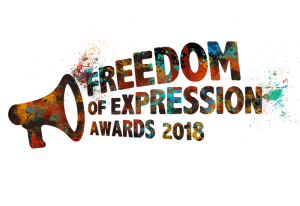
Index on Censorship ouvre les nominations à sa bourse pour la liberté d’expression 2018
- La Bourse récompense journalistes, activistes, activistes numériques et artistes qui combattent la censure à travers le monde
- Les boursiers reçoivent une aide d’un an
- Soumettez une candidature sur indexoncensorship.org/nominations
- Les candidatures sont ouvertes du 5 septembre au 8 octobre
- #IndexAwards2018
Les nominations à la bourse de la liberté d’expression Index on Censorship 2018 sont ouvertes. Entrant dans sa 18eme édition, cette récompense honore certains des héros les plus remarquables de la liberté d’expression à travers le monde.
Les gagnants des années précédentes comprennent l’activiste russe Ildar Dadin qui a été libéré de prison après avoir été nominé, les activistes chinois anonymes GreatFire qui ont depuis bénéficié d’un soutien financier important, et le musicien et activiste Smockey qui a reçu de l’aide pour reconstruire son studio au Burkina Faso après sa destruction par un incendie.
La Bourse est destinée à soutenir des activistes à travers le globe. Les vainqueurs des éditions précédentes incluent le caricaturiste syrien Ali Farzat, l’activiste pakistanaise Malala Yousafzai, la journaliste d’investigation saoudienne Safa Al Ahmad et la photographe sud-africaine LGBTI Zanele Muholi.
Index invite le public, les représentants de la société civile, les associations et les médias à nominer des individus ou des organisations qui méritent d’être célébrés et de voir leur travail contre la censure soutenu internationalement.
Nous offrons quatre bourses, une dans chacune de ces quatre catégories :
- Arts, pour les artistes (de tout type) et les producteurs dont le travail combat la répression et l’injustice tout en célébrant la libre expression artistique
- Activisme pour les activistes qui ont eu un impact significatif dans la lutte contre la censure et la promotion de la liberté d’expression
- Activisme numérique saluant des usages innovants de la technologie pour circonvenir la censure et faciliter l’échange gratuit et indépendant d’information
- Journalisme, saluant un journalisme à fort impact, courageux et déterminé (sur tous supports) qui dénonce la censure et les menaces à la liberté d’expression
Tous ceux ayant remporté un prix se voient offrir une année d’assistance directe pendant laquelle ils reçoivent des conseils en formation, en création de réseaux et une assistance 24 heures sur 24. Les 12 mois commencent avec une résidence d’une semaine à Londres (en avril 2018). Au cours de l’année nous cherchons à aider les candidats à perpétuer et à étendre leur précieux travail de défense de la libre expression à travers le monde.
« Non seulement l’attribution des prix de la liberté d’expression assure une visibilité aux personnes et aux groupes dont le travail brillant et valeureux n’a de cesse de promouvoir la liberté d’expression à l’échelle internationale, mais cela consolide également leurs structures et leur organisation », dit Jodie Ginsbberg, PDG de Index. « Ces gens sont de véritables héros. Des gens qui, souvent, doivent faire face à des obstacles considérables et à un danger immense et bien réel dans le simple but de faire valoir leur libre expression. J’incite vivement tout un chacun à nous soumettre le nom de leur champion de la libre expression : il faut s’assurer que leur voix soit entendue. »
La liste des nominés aux prix 2018 sera annoncée fin janvier. Les noms des gagnants seront révélés lors d’une cérémonie de gala en avril 2018 à Londres.
Pour plus d’informations quant aux prix et à la bourse, veuillez contacter sean@indexoncensorship.org ou appeler le +44 (0)207 963 7262.
13 Sep 17 | Mapping Media Freedom, media freedom featured, News and features, Ukraine
[vc_row][vc_column][vc_single_image image=”95583″ img_size=”full” alignment=”center” onclick=”custom_link” link=”https://mappingmediafreedom.org/#/”][vc_column_text]Journalists across Ukraine are being suppressed, deported and banned from the country, according to the Index on Censorship’s Mapping Media Freedom project.
Ukraine has imposed a number of restrictions on the media as a response to Russian propaganda in order to protect its national security.
Mapping Media Freedom correspondent Vitalii Atanasov said that “the deportation of journalists is not an effective and justified response to such challenges and threatens press freedom. It is necessary to develop another mechanism to maintain a truly professional and fair media that could compete with all sorts of propaganda and fake news.”
The conflict has led to a rise in anti-media sentiments across Ukraine with some prominent members of the Ukrainian government branding journalists as traitors. Public opinion has swayed over the course of the conflict and the press is often criticised for showing the problems of Ukrainian society.
“Another disturbing trend is that the authorities and their supporters are promoting the idea of the ‘fifth column’, hinting that critical journalism can be a threat inspired from outside. Unfortunately, journalists are an easy target,” Atanasov said
Journalists operating in Ukraine are being blamed for the spread of classified information and for undermining the Ukrainian army. “There have been several cases when journalists were accused of having published classified information, but in the end, the accusations were not confirmed,” Atanasov added.
With both the public and the politicians demonising the press, it has become increasingly dangerous for journalists to work and operate in the Ukraine. The most extreme example of the dangers the media face in Ukraine is the assassination of Pavel Sheremet in July 2016.
Atanasov said that this has led to some self-censorship in the Ukrainian press. “I can assume that some journalists resort to self-censorship in some cases, as they would like to avoid obstacles and problems for their work in the future.”[/vc_column_text][/vc_column][/vc_row][vc_row][vc_column][vc_separator][vc_custom_heading text=”Media freedom is under threat worldwide. Journalists are threatened, jailed and even killed simply for doing their job.” font_container=”tag:h3|text_align:left” use_theme_fonts=”yes” link=”url:https%3A%2F%2Fwww.indexoncensorship.org%2Fnewsite02may%2Fcampaigns%2Fpress-regulation%2F|||”][vc_row_inner][vc_column_inner width=”1/2″][vc_column_text]Index on Censorship monitors media freedom in Ukraine and 41 other European area nations.
As of 11/9/2017, there were 296 verified violations of press freedom associated with Turkey in the Mapping Media Freedom database.[/vc_column_text][/vc_column_inner][vc_column_inner width=”1/2″][vc_column_text]Index on Censorship campaigns against laws that stifle journalists’ work. We also publish an award-winning magazine featuring work by and about censored journalists. Support our work today.[/vc_column_text][/vc_column_inner][/vc_row_inner][vc_separator][/vc_column][/vc_row][vc_row][vc_column][vc_column_text]Recent cases reported to Mapping Media Freedom’s database of European area press freedom violations:
Two Russian journalists were deported and banned from Ukraine this August. The first was Tamara Nersesyan, a correspondent for the All-Russian State Television and Radio Company on 15 August. Shortly after her report on the Ukrainian music festival Bandershtat was shown on Channel One she was deported and banned from the country.
On 30 August, Russian State TV Channel One correspondent Anna Kurbatova was deported. A spokesperson for the Security Service of Ukraine (SBU) Olena Gitlyanska wrote that “Russian propagandist Anna Kurbatova was forcibly expelled from Ukraine… she is forbidden to enter the territory of our state for three years.” The reason stated for deportation was “because of activities, which hurt the national interests of Ukraine.” Information about Kurbatova was published on the Myrotvorets because she was judged to be distributing “anti-Ukrainian propaganda” and to be “manipulating significant information”. In 2016, the Myrotvorets leak shared the names of thousands of journalists accredited in the separatist republics. She had recently reported on the deportation of two Spanish journalists and covered Ukrainian Independence Day for Channel One.
Spanish journalists Antonio Pampliega and Manuel Ángel Sastre were deported from Ukraine. Both had been blacklisted in 2015 but granted access to the country after pressure from Spanish authorities. However, on 25 August an SBU spokeswoman said that the journalists were barred because of their “activities that contradict the national interest of Ukraine,” according to the Committee to Protect Journalists. The pair were deported to the Netherlands after a 20-hour detention in Kiev airport. Sastre said the Ukrainian authorities “treated us like criminals”.[/vc_column_text][/vc_column][/vc_row][vc_row][vc_column][vc_basic_grid post_type=”post” max_items=”4″ element_width=”6″ grid_id=”vc_gid:1505295853750-ecfb674d-953f-9″ taxonomies=”6564″][/vc_column][/vc_row]
12 Sep 17 | Press Releases, Volume 46.03 Autumn 2017 Extras
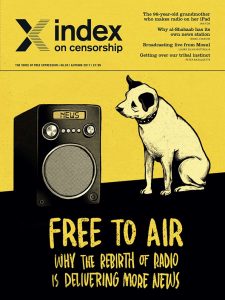
The autumn 2017 Index on Censorship magazine
The retro medium of radio is back, as we explore in the autumn issue of Index on Censorship magazine 2017, which is excellent news for the delivery of well, news.
“The new rise of radio allows more opportunities to discuss and debate than ever before, but we must also fight for radio stations to be unbound from state control and to be able to broadcast news freely,” Index on Censorship magazine Editor Rachael Jolley writes in the new issue.
Listen to a radio show, and you might be provoked, informed or excited about a new subject. But in listening you are doing something that is a little out of fashion, contemplating what others are saying, not tweeting some angry instant response, or even just posting the first thought that comes into your head.
After many predictions of its death, radio is on the rise again, its audience is growing across various age groups and various countries including the US and UK, and part of the reason might be because we are all a bit tired of transmitting constantly. Instead we appear to be happier to settle down and listen to radio and, particularly its news programmes, once again, argued Jolley.
We report that in the summer of 2017, around 48.2 million people in Britain listened to the radio at least once a week, up 0.9% from 2016. And in 2017 across the Atlantic, the USA is seeing a surge in listeners for news and talk radio. Of particular interest is the steady growth in those who listen to the radio for news in the 18-35 age group. “Radio was thought to be going out of fashion as new technologies elbowed it out of the way, but instead it’s back and gathering new audiences. Part of the reason might be growing awareness that someone’s ramblings are not necessarily a reliable source of information.”
Our special report on radio and its impact in 2017 includes a report from Laura Silvia Battaglia in Mosul on the radio station that is giving a voice to the residents of the city, while Claire Kopsky interviews people behind “radio boats”, which are broadcasting information on cholera in the Central African Republic in a bid to educate the population about the disease. We report on how Somali radio journalists receive threats from Al-Shabab for doing their jobs. “I check underneath my wheels, but normally they put bombs under the seat in your car,” says radio reporter Marwan Mayow Hussein.
Then there are the stories of radio proving a perfect outlet for people to share their most private inner thoughts and experiences, as radio star Wana Udobang writes about from a Nigerian context and best-selling author Xinran remembers back in China.
“Part of the increased popularity of radio is that it’s managed to evolve and we explore how podcasts are being made in some of the least likely – and most censored – places, such as China, and smuggled into North Korea.” The magazine also have a handy guide on making your own podcasts, for those with an idea.
But radio’s ability to reach the masses also means that this powerful tool can get into the wrong hands. Then there’s Rwanda, which two decades ago saw the airwaves being monopolised by voices promoting genocide. The country has moved on a lot, but radio there is still far from free. Veteran reporter Graham Holliday who has covered the country reports on the latest challenges.
And there’s interviews with BBC World Service English director Mary Hockaday, pirate radio DJ Allan Brando, Hong Kong broadcaster Hugh Chiverton and science presenter Robin Ince.
Outside the special report on radio, the magazine publishes a special investigation into the dangers faced by journalists in Mexico, by our special correspondent Duncan Tucker, who looks at how many reporters have been murdered since 2000, as 2017 looks to record the most killings for a decade.
Plus Orwell Prize winning journalist Iona Craig argues that encrypted apps are needed to give reporters in dangerous countries more security.
Notes:
You can order your copy here, or take out a digital subscription via Exact Editions. Copies are also available at the BFI, the Serpentine Gallery, MagCulture, (London), News from Nowhere (Liverpool), Home (Manchester), Calton Books (Glasgow) and on Amazon. Each magazine sale helps Index on Censorship continue its fight for free expression worldwide.
About Index on Censorship magazine
Index on Censorship magazine was first published in 1972 and remains the only global magazine dedicated to free expression. Since then, some of the greatest names in literature and academia have written for the magazine, including Nadine Gordimer, Mario Vargas Llosa, Amartya Sen, Samuel Beckett, as well as Arthur Miller and Harold Pinter. The magazine continues to attract great writers, passionate arguments, and expose chilling stories of censorship and violence. It is the only global free expression magazine.
Each quarterly magazine is filled with reports, analysis, photography and creative writing from around the world. Index on Censorship magazine is published four times a year by Sage, and is available in print, online and mobile/tablets (iPhone/iPad, Android, Kindle Fire).
Winner of the British Society of Magazine Editors 2016 Editor of the Year in the special interest brand category.
As the Boston Globe said, Index has bylines that Vanity Fair would kill for. “Would that bylines were the only things about Index people were willing to kill for”
More information
For more information, previews or quotes, contact sean@indexoncensorship.org
Subscriptions
12 Sep 17 | Volume 46.03 Autumn 2017, Volume 46.03 Autumn 2017 Extras
[vc_row][vc_column][vc_column_text][/vc_column_text][vc_column_text]
In the autumn 2017 issue of Index on Censorship, our special report looks at why the rebirth of radio is delivering more news and how that’s very good for freedom of expression.
The podcast includes interviews from several people featured in the magazine, who show how innovations in radio are allowing hard-to-reach populations to receive vital information. Ida Jooste from Internews talks about how radio helped curtail a cholera epidemic in the Central African Republic, Peter Kettler from Coffee Lifeline discusses radio in Rwanda and Joe Hynek talks about a station in a remote area of Iowa, USA.
Also in the podcast is an interview with Ghassan Ferghiani, a bookseller operating between the UK and Libya.
Print copies of the magazine are available on Amazon, or you can take out a digital subscription via Exact Editions. Copies are also available at the BFI, the Serpentine Gallery, MagCulture, (London), News from Nowhere (Liverpool), Home (Manchester) and on Amazon. Each magazine sale helps Index on Censorship continue its fight for free expression worldwide.
[/vc_column_text][/vc_column][/vc_row][vc_row content_placement=”top”][vc_column width=”1/3″][vc_custom_heading text=”Free to air” font_container=”tag:p|font_size:24|text_align:left” link=”url:%20https%3A%2F%2Fwww.indexoncensorship.org%2Fnewsite02may%2F2017%2F09%2Ffree-to-air%2F|||”][vc_column_text]Through a range of in-depth reporting, interviews and illustrations, the autumn 2017 issue of Index on Censorship magazine explores how radio has been reborn and is innovating ways to deliver news in war zones, developing countries and online
With: Ismail Einashe, Peter Bazalgette, Wana Udobang[/vc_column_text][/vc_column][vc_column width=”1/3″][vc_single_image image=”95458″ img_size=”medium” alignment=”center” onclick=”custom_link” link=”https://www.indexoncensorship.org/newsite02may/2017/09/free-to-air/”][/vc_column][vc_column width=”1/3″ css=”.vc_custom_1481888488328{padding-bottom: 50px !important;}”][vc_custom_heading text=”Subscribe” font_container=”tag:p|font_size:24|text_align:left” link=”url:https%3A%2F%2Fwww.indexoncensorship.org%2Fnewsite02may%2Fsubscribe%2F|||”][vc_column_text]
In print, online. In your mailbox, on your iPad.
Subscription options from £18 or just £1.49 in the App Store for a digital issue.
Every subscriber helps support Index on Censorship’s projects around the world.
 SUBSCRIBE NOW
SUBSCRIBE NOW
[/vc_column_text][/vc_column][/vc_row]
12 Sep 17 | Magazine, Volume 46.03 Autumn 2017
Journalist
Amie Ferris-Rotman is an award-winning journalist, based in Moscow, who currently writes for Foreign Policy. She previously reported for The Wall Street Journal and Reuters from across Russia and the former Soviet Union
Writer and radio presenter
Xinran is a popular radio personality in China, who had a call-in programme named Words on the Night Breeze from 1989 to 1997. She is also the author of several bestselling books, including The Good Women of China, China Witness and Buy Me the Sky.
Writer
Peter Bazalgette is executive chairman of ITV and former chair of Arts Council England. He is author of The Empathy Instinct: How to Create a More Civil Society (John Murray), which was published in January 2017.
12 Sep 17 | Volume 46.03 Autumn 2017
[vc_row][vc_column][vc_custom_heading text=”Contributors include Madeleine Thien, Xinran, Peter Bazalgette, Laura Silvia Battaglia, Mahesh Rao, Chawki Amari and Amie Ferris-Rotman”][vc_column_text]
The retro medium of radio is back, as we explore in the Autumn issue of Index on Censorship magazine 2017, which is excellent news for the delivery of well, news. Laura Silvia Battaglia reports from Mosul on the radio station that is giving a voice to the people there, while Claire Kopsky interviews people behind “radio boats“, boats that are broadcasting information on cholera in the Central African Republic in a bid to educate the population about the disease.
[/vc_column_text][vc_single_image image=”95458″ img_size=”full” alignment=”center”][/vc_column][/vc_row][vc_row][vc_column][vc_column_text]
Then there are the examples of radio proving a perfect outlet for people to share their most private inner thoughts and experiences, as Wana Udobang writes about from a Nigerian context and Xinran remembers back in China.
Part of the increased popularity of radio is that it’s managed to evolve and we have an article on how podcasts are being made in some of the least likely – and most censored – places, such as China, and smuggled into North Korea. We also have a handy guide on making your own podcasts, for those with an idea.
But radio’s ability to reach the masses also means that this powerful tool can get into the wrong hands. Ismail Einashe explores this in his article on al-Shabaab in Somalia, who operate a very popular radio station. Then there’s Rwanda, which two decades ago saw the airwaves being monopolised by voices promoting genocide. The country has moved on a lot, but radio is still far from free.
Outside the special report, we take you to Russia where a seemingly innocent film about the last tsar has angered the country’s church. With Banned Books Week coming up, we ask a selection of writers to choose the books that made them think most about free speech. What would be your pick? And we have an extract from a forthcoming novel highlighting the dangers of being a journalist in Mexico, with superb illustrations to accompany.
Finally, don’t miss our cut-out-and-keep male nipple template, a handy tool to ensure female nipples are social media friendly.
[/vc_column_text][/vc_column][/vc_row][vc_row][vc_column][vc_custom_heading text=”Special report: Free to air “][vc_column_text]
Why the rebirth of radio is delivering more news
Fear for the airwaves, by Ismail Einashe: In Somalia al-Shabaab control a prominent radio station and a fifth of the country. Meet the radio presenters who brave danger to keep reporting
Project freedom? by Sally Gimson: Radio Free Europe was at the frontline of Cold War reporting. Three decades on, is it still needed?
Sound unbound, by Oleg Shynkarenko: How a new radio station was built from scratch using crowdfunding to break away from oligarchs and government pressure
Don’t touch that dial, by Kieran Etoria-King, Rachael Jolley, Jemimah Steinfeld: Interviews with a pirate rain DJ, comedian Robin Ince, a Hong Kong presenter, the controller of BBC World Service English and the editor of a refugee radio station
Syrians speaking, by Rhodri Davies: Syrians in exile on why they set up a new radio station and what it covers
Power to the podcast, by Mark Frary: Podcasting is bringing a whole new audience to radio and giving investigative journalism a boost. Plus, our handy guide to making your own podcasts
Stripsearch cartoon, by Martin Rowson: There’s a new app out called Smart Ink. Will it become a dictator’s favourite tool?
Tuning into a brave new world, by Jan Fox: Grassroots radio is on the rise in the USA, where a 98-year-old granny is a station superstar, but it’s not without challenges
Under the rad(io)ar, by Kaya Genç: A radio station in Turkey, known for its criticism of the government, is somehow surviving the current crackdown
Taboos and telephones, by Xinran: Radio was one of the first outlets where Chinese women spoke about personal issues such as forced abortions. Is the same honesty possible today?
Stationed in the warzone, by Laura Silvia Battaglia: Radio presenters in Mosul tell Index how the station is giving a voice to the people, but it has not been easy operating under bombardment
Secrets, lies and Lagos lives, by Wana Udobang: Exorcisms and illicit affairs are just some of the topics callers to a popular talk show in Nigeria wanted to share
New waves, by Claire Kopsky: Radio took to riverboats in the Central African Republic to bring information and news about a cholera epidemic
Chat rooms, by Milton Walker: Talk about interactivity, Jamaican radio shows sometimes receive as many as 4,000 text messages
Sound and fury, by Graham Holliday. Two decades ago Rwandan radio was monopolised by voices promoting genocide, but radio is still not free from controversy
Let’s get this show on the road, by Silvia Nortes: Meet the Spanish comedians behind Radio Gaga, a television show about radio which visits overlooked communities
[/vc_column_text][/vc_column][/vc_row][vc_row][vc_column][vc_custom_heading text=”In focus”][vc_column_text]
China’s other great wall, by Madeleine Thien: 1980s Beijing saw the creation of another wall, one promoting democracy. The Booker Prize nominee discusses its legacy today
Closing access to the back door, by Iona Craig: Investigative journalists working in hostile environments need encrypted apps to work more safely. This is being forgotten in the current debate on encryption
No one owns language, by Jemimah Steinfeld: The 2016 Man Booker Prize winner Paul Beatty discusses “offensive” language and teaching styles
Risky business, by Charlotte Bailey: Amid confiscations and threats, one chain of bookstores continues to operate in Libya
Tracking down the F word in fiction, by Mahesh Rao, Sean Gallagher, Kieran Etoria-King, Grainne Maguire, Ryan McChrystal: Ahead of Banned Books Week, writers choose the books that make them think about free speech
Costume drama, by Amie Ferris-Rotman: Russia’s religious right claim God is annoyed about a film on the last tsar, just part of a new censorship culture
Bulldozing his way through the media, by Natasha Joseph: Tanzania’ current president has been nicknamed “the bulldozer” and the media is in his sight
Big brother we’re watching you, by Jason Daponte: Members of a new, hip London club claim to have empowered voters in the UK General Election
Making a killing, by Duncan Tucker: A special Index investigation looking at why Mexico is an increasingly deadly place to be a journalist as reporters face threats from corrupt police to deadly drug gangs
New tribal instinct, by Peter Bazalgette: Our pact mentality has become more pronounced as we spend more time online, the author argues
[/vc_column_text][/vc_column][/vc_row][vc_row][vc_column][vc_custom_heading text=”Culture”][vc_column_text]
Parallel lives and unparalleled risks, by Tim MacGabhann: The author discusses his time reporting from Mexico, how the death of one journalist particularly affected him and introduces an excerpt from his forthcoming book
The people’s poet, by Wiji Thukul: Nearly 20 years since Indonesia’s famous poet disappeared, Eliza Vitri Handayani introduces the man and some new translations of his poems
The disappeared, by Chawki Amari: The award-winning Algerian writer talks about prison in Algeria and the media landscape in France. Plus a short story
[/vc_column_text][/vc_column][/vc_row][vc_row][vc_column][vc_custom_heading text=”Column”][vc_column_text]
Index around the world, by Kieran Etoria-King: Top comedy acts discuss the importance of humour following our event Stand up for Satire, plus news of other Index summer highlights
[/vc_column_text][/vc_column][/vc_row][vc_row][vc_column][vc_custom_heading text=”Endnote”][vc_column_text]
Uncovering the nipple cover-up, by Jemimah Steinfeld: The battle to give the female nipple equal rights as one woman heads to the Supreme Court. Plus, a cut-out-and-keep male nipple for social media use
[/vc_column_text][/vc_column][/vc_row][vc_row content_placement=”top”][vc_column width=”1/3″][vc_custom_heading text=”Free to air” font_container=”tag:p|font_size:24|text_align:left” link=”url:%20https%3A%2F%2Fwww.indexoncensorship.org%2Fnewsite02may%2F2017%2F09%2Ffree-to-air%2F|||”][vc_column_text]Through a range of in-depth reporting, interviews and illustrations, the autumn 2017 issue of Index on Censorship magazine explores how radio has been reborn and is innovating ways to deliver news in war zones, developing countries and online
With: Ismail Einashe, Peter Bazalgette, Wana Udobang[/vc_column_text][/vc_column][vc_column width=”1/3″][vc_single_image image=”95458″ img_size=”medium” alignment=”center” onclick=”custom_link” link=”https://www.indexoncensorship.org/newsite02may/magazine”][/vc_column][vc_column width=”1/3″ css=”.vc_custom_1481888488328{padding-bottom: 50px !important;}”][vc_custom_heading text=”Subscribe” font_container=”tag:p|font_size:24|text_align:left” link=”url:https%3A%2F%2Fwww.indexoncensorship.org%2Fnewsite02may%2Fsubscribe%2F|||”][vc_column_text]In print, online. In your mailbox, on your iPad.
Subscription options from £18 or just £1.49 in the App Store for a digital issue.
Every subscriber helps support Index on Censorship’s projects around the world.
 SUBSCRIBE NOW[/vc_column_text][/vc_column][/vc_row]
SUBSCRIBE NOW[/vc_column_text][/vc_column][/vc_row]
12 Sep 17 | News and features, Volume 46.03 Autumn 2017
[vc_row][vc_column][vc_custom_heading text=”The number of people listening to radio stations is on the rise, and with the arrival of podcasting this old form of media is having a rebirth, argues Rachael Jolley”][vc_row_inner][vc_column_inner][vc_column_text]
[/vc_column_text][/vc_column_inner][/vc_row_inner][/vc_column][/vc_row][vc_row][vc_column][vc_column_text]
A LONG TIME ago my friend Tom told me that for many people there were only two states of mind: talking, and waiting to talk. In effect as his simple description suggests, no one was listening to what anyone else had to say.
This was way before social media got to the state it is in today. In 2017 we have all become transmitters, broadcasting our micro thoughts and reactions almost incessantly. Sometimes I worry that people spend so much of their time on Twitter that they can’t have time to fit in basics like eating, cooking, sleeping, and doing a job.
Listen to a radio show, and you might be provoked, informed or excited about a new subject. But in listening you are doing something that is a little out of fashion, contemplating what others are saying, not writing down some angry instant response, or even just posting the first thought that comes into your head. Surprisingly radio is on the rise again (Americans listened to 11.5 billion hours of news across Nielsen’s portable people meter markets in 2016, up from 10.5 billion in 2015), its audience is growing across various age groups, and part of the reason might be because we are all tired of transmitting constantly. Instead we appear to be happier to settle down and listen to radio and, particularly its news programmes, again.
In the summer of 2017, around 48.2 million people in Britain listened to the radio at least once a week, up 0.9% from 2016. And in 2017 across the Atlantic, the USA is seeing a surge in listeners for news and talk radio. Of particular interest is the steady growth in those who listen to the radio for news in the 18-35 age group. Radio was thought to be going out of fashion as new technologies elbowed it out of the way, but instead it’s back and gathering new audiences. Part of the reason might be growing awareness that someone’s ramblings are not necessarily a reliable source of information.
Meanwhile, according to the Reuters Institute for the Study of Journalism at Oxford University, figures show that in most countries the proportion of the public using social media as a source for news has stagnated. In Portugal, Italy and Australia it has declined.
So why is radio so important? It has a particular strength over other forms of media and communication. You might only need a battery to give it life. And you can listen to radio anywhere without wifi, without a plug point, without being able to read, and without much fuss. That makes radio an essential for anyone living in a remote location, who hasn’t got access to newspapers or internet. It can bring the news and information about what is happening in the world to you, and if you live in a country where you don’t want people to track you, then a battery-operated radio is the way to go.
[/vc_column_text][/vc_column][/vc_row][vc_row][vc_column width=”1/4″][vc_icon icon_fontawesome=”fa fa-quote-left” color=”custom” align=”right” custom_color=”#dd3333″][/vc_column][vc_column width=”3/4″][vc_custom_heading text=”Digital technologies have given radio a new lease of life.” google_fonts=”font_family:Libre%20Baskerville%3Aregular%2Citalic%2C700|font_style:400%20italic%3A400%3Aitalic”][/vc_column][/vc_row][vc_row][vc_column][vc_column_text]
In remote regions of Africa and India, where few other options are available, radio is massively important as a means of finding out what is going on locally, and internationally.
Radio is an old technology. It is the wrinkly old guy against the bouncing baby that is Twitter. The first voice broadcast was in 1900, and it’s come a long way since then.
After television came along, some thought it was the end for radio. But it wasn’t. Then along came the internet, and again some thought it was the last long days of summer for radio. But in fact digital technologies have given radio a new lease of life. Podcasting has kicked a whole new audience radio-wards, while retaining some of its old audience. Podcasts are portable, of course, and can be listened to on the way to work.
According to data from US-based Edison Research, audiences for podcasts in Australia and the United States are seeing steady growth. In Australia, among those who listen to podcasts, 30% listen to more than five hours a week, either at home or in their cars.
Not only have podcasts given us a new form of radio, but they have opened up new opportunities for people who want to make their own programmes. Anyone can now be the equivalent of a radio reporter by making their own podcast at very little cost. With some basic skills and nothing more than a smart phone, you can record interviews, and add an introduction. You can even cut them together on a phone app, or a free internet programme, before publishing your programme on a platform like Soundcloud.
Podcasting has given investigative reporting a boost too, as those who listened to the award-winning Serial will recognise. Meticulous and detailed research went into the journalism for the first series of Serial, which reinvestigated a murder in Baltimore. Millions of people tuned in around the world to find out what each episode would unveil. But unlike the old days of radio, listeners didn’t always have to listen at the same time every week, or sit around an old set in the corner of their living room. The podcast could be downloaded to phones, or iPads for a long journey, or even just live streamed.
While journalists are using radio to bring information to hard to reach places, the bad news, which we report in this issue, is that others are trying to stop them.
In India, the government still tightly controls news radio, so only the state can broadcast, despite having hinted over the past few years that things might change. This is a country where radio is vital for millions of people. The Indian government should be rethinking its approach to radio as innovative radio pioneer Shu Choudray argues (p17).
In Somalia, radio journalist Marwan Mayow Hussein checks under his car for bombs before going off to work. The work he does is dangerous, and certain people would rather he didn’t broadcast, as Ismail Einashe reports in this magazine (p8). Meanwhile in Iraq, the team at Alghad FM in Mosul don’t make their names public in order to stay a little safer as they continue to work in a war zone. Laura Silvia Battaglia went there to meet them (p41).
In Rwanda, radio is vital, Peter Kettler who ran an NGO called Coffee Lifeline there, told Index: “Radio is far more powerful than messages on mobile phones. In Rwanda you are dealing with a heavily illiterate population, but everyone has a radio or access to a shared radio.” During the period of genocide radio was used to incite violence. Graham Holliday investigates the role of radio in Rwanda today (p51), and finds it faces censorship and banning orders. The BBC World Service in English and Kinyarwanda have been banned by the president, and journalists are fleeing the country.
The new rise of radio allows more opportunities to discuss and debate than ever before, but we must also fight for radio stations to be unbound from state control and to be able to broadcast news freely.
[/vc_column_text][/vc_column][/vc_row][vc_row][vc_column][vc_column_text]
Rachael Jolley is the editor of Index on Censorship magazine. She recently won the editor of the year (special interest) at British Society of Magazine Editors’ 2016 awards
[/vc_column_text][/vc_column][/vc_row][vc_row][vc_column][vc_custom_heading text=”From the Archives”][vc_row_inner][vc_column_inner width=”1/3″][vc_single_image image=”89165″ img_size=”213×300″ alignment=”center” onclick=”custom_link” link=”http://journals.sagepub.com/doi/pdf/10.1177/03064220100390021001″][vc_custom_heading text=”Radio waves” font_container=”tag:p|font_size:24|text_align:left” link=”url:http%3A%2F%2Fjournals.sagepub.com%2Fdoi%2Fpdf%2F10.1177%2F03064220100390021001|||”][vc_column_text]June 2010
Liam Hodkinson and Elizabeth Stitt compile comprehensive facts on radio usage throughout the world.[/vc_column_text][/vc_column_inner][vc_column_inner width=”1/3″][vc_single_image image=”90954″ img_size=”213×300″ alignment=”center” onclick=”custom_link” link=”http://journals.sagepub.com/doi/pdf/10.1080/03064229408535741″][vc_custom_heading text=”Death by radio” font_container=”tag:p|font_size:24|text_align:left” link=”url:http%3A%2F%2Fjournals.sagepub.com%2Fdoi%2Fpdf%2F10.1080%2F03064229408535741|||”][vc_column_text]September 1994
If Rwandan genocide comes to trial, owners of Radio des Milk Collines should be head of the accused.[/vc_column_text][/vc_column_inner][vc_column_inner width=”1/3″][vc_single_image image=”89165″ img_size=”213×300″ alignment=”center” onclick=”custom_link” link=”http://journals.sagepub.com/doi/pdf/10.1177/0306422010372565″][vc_custom_heading text=”Going local” font_container=”tag:p|font_size:24|text_align:left” link=”url:http%3A%2F%2Fjournals.sagepub.com%2Fdoi%2Fpdf%2F10.1177%2F0306422010372565|||”][vc_column_text]June 2010
Jo Glanville explains how radio has the most impact on the local level than any other media platform.[/vc_column_text][/vc_column_inner][/vc_row_inner][vc_separator][/vc_column][/vc_row][vc_row][vc_column width=”1/3″][vc_custom_heading text=”Free to air” font_container=”tag:p|font_size:24|text_align:left” link=”url:%20https%3A%2F%2Fwww.indexoncensorship.org%2Fnewsite02may%2F2017%2F09%2Ffree-to-air%2F|||”][vc_column_text]Through a range of in-depth reporting, interviews and illustrations, the autumn 2017 issue of Index on Censorship magazine explores how radio has been reborn and is innovating ways to deliver news in war zones, developing countries and online
With: Ismail Einashe, Peter Bazalgette, Wana Udobang[/vc_column_text][/vc_column][vc_column width=”1/3″][vc_single_image image=”95458″ img_size=”medium” alignment=”center” onclick=”custom_link” link=”https://www.indexoncensorship.org/newsite02may/2017/09/free-to-air/”][/vc_column][vc_column width=”1/3″][vc_custom_heading text=”Subscribe” font_container=”tag:p|font_size:24|text_align:left” link=”url:https%3A%2F%2Fwww.indexoncensorship.org%2Fnewsite02may%2Fsubscribe%2F|||”][vc_column_text]In print, online. In your mailbox, on your iPad.
Subscription options from £18 or just £1.49 in the App Store for a digital issue.
Every subscriber helps support Index on Censorship’s projects around the world.
 SUBSCRIBE NOW[/vc_column_text][/vc_column][/vc_row]
SUBSCRIBE NOW[/vc_column_text][/vc_column][/vc_row]
 Index on Censorship’s database tracking violations of press freedom recorded 571 verified threats and limitations to media freedom during the first two quarters of 2017.
Index on Censorship’s database tracking violations of press freedom recorded 571 verified threats and limitations to media freedom during the first two quarters of 2017. 